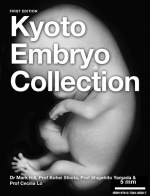UNSW Medicine Learning and Teaching Forum 2016 - Supporting Independent Learning with eBooks: Difference between revisions
mNo edit summary |
m (→External Links) |
||
| Line 31: | Line 31: | ||
* [http://itunes.apple.com/us/book/id1143922693 iTunes Embryology ebook Link] | * [http://itunes.apple.com/us/book/id1143922693 iTunes Embryology ebook Link] | ||
* [http://www.apple.com/au/ibooks-author/ iBooks Author] | * [http://www.apple.com/au/ibooks-author/ iBooks Author] | ||
* Video - [https://www.youtube.com/watch?v=nWL2CwqQiLQ iBooks Author Basics plus Widgets 2015 Tutorial] | |||
* Video - [https://www.youtube.com/watch?v=3nKprMbazSk Creating a quiz widget in iBooks] | |||
{{Footer}} | {{Footer}} | ||
Revision as of 14:00, 1 December 2016
| Embryology - 27 Apr 2024 |
|---|
| Google Translate - select your language from the list shown below (this will open a new external page) |
|
العربية | català | 中文 | 中國傳統的 | français | Deutsche | עִברִית | हिंदी | bahasa Indonesia | italiano | 日本語 | 한국어 | မြန်မာ | Pilipino | Polskie | português | ਪੰਜਾਬੀ ਦੇ | Română | русский | Español | Swahili | Svensk | ไทย | Türkçe | اردو | ייִדיש | Tiếng Việt These external translations are automated and may not be accurate. (More? About Translations) |
Supporting Independent Learning with eBooks
Mark Hill.
Anatomy, School of Medical Sciences.
Abstract
History of e-books
The electronic book (e-book) format and related online stores have developed recently as a new platform for publishing and distributing educational books. In 1993, the earliest implementation of the electronic “book” format was the Adobe Portable Document Format (PDF) that is still used educationally to distribute Powerpoint slides or Word documents to students. In 2007, the Amazon Kindle and store was introduced as a platform for distributing and reading proprietary formatted e-books. Readers for this format are now available on many platforms and require publishing through the Amazon store. In the same year, an alternate EPUB format became an official standard of the International Digital Publishing Forum (IDPF) used on iBooks on iOS and Google Books on Android. In 2010, Apple iBooks was released and in 2013 became compatible with all Apple platforms (iPhone, iPad, laptop and desktop) and can also be exported as PDF. These e-books are prepared with (free) iBooks Author software that allows import of several existing document formats, and can be published freely on iTunes store.
Embryology e-book
There are many advantages of e-book format, the main one being portability. This Embryology e-book the Kyoto Embryo Collection[1] allows students to independently develop an introductory understanding of the changes occurring in the human embryo during the first trimester. The book is structured in chapters as a timeline from week 3 to 8 (gestational week 5 to 10), with each stage describing both structures and events. Text words are linked to a comprehensive glossary that also lists the related terms/concepts as well as other locations within the book where that term is specifically used. This brief notes section is followed by external rotational views (ventral, left, right and dorsal) of the embryo stage. Followed by images that include interactive labels to guide the student. The next histology section aids the understanding of internal development, and includes serial sections and interactive labels. The final section to each chapter is the most interactive, as it includes movies of embryo high resolution MRI scans and episcopic fluorescent image capture (EFIC) reconstructions. Both unlabeled and labeled movie versions are available, including excerpts covering key embryonic events such as cardiac septation.
Like a traditional textbook, students can also highlight text and make their own notes within the e-book itself. Highlighted material can be: exported to social media, emailed, exported as notes or spoken. The glossary terms within each chapter can also be displayed as “flip cards” allowing the student to test their understanding of embryology terminology. Quizzes and 3D models can also be included within this e-book format, though not included or demonstrated in this first edition.
Reference
- ↑ Hill, MA. Shiota, K. Yamada, S. & Ho, C. (2016) Kyoto Embryology Collection. Apple iTunes. http://itunes.apple.com/us/book/id1143922693 ISBN 978-0-7334-3528-7.
Links
External Links
External Links Notice - The dynamic nature of the internet may mean that some of these listed links may no longer function. If the link no longer works search the web with the link text or name. Links to any external commercial sites are provided for information purposes only and should never be considered an endorsement. UNSW Embryology is provided as an educational resource with no clinical information or commercial affiliation.
- http://tiny.cc/UNSWMedLT-2016_eBooks
- iTunes Embryology ebook Link
- iBooks Author
- Video - iBooks Author Basics plus Widgets 2015 Tutorial
- Video - Creating a quiz widget in iBooks
Cite this page: Hill, M.A. (2024, April 27) Embryology UNSW Medicine Learning and Teaching Forum 2016 - Supporting Independent Learning with eBooks. Retrieved from https://embryology.med.unsw.edu.au/embryology/index.php/UNSW_Medicine_Learning_and_Teaching_Forum_2016_-_Supporting_Independent_Learning_with_eBooks
- © Dr Mark Hill 2024, UNSW Embryology ISBN: 978 0 7334 2609 4 - UNSW CRICOS Provider Code No. 00098G

